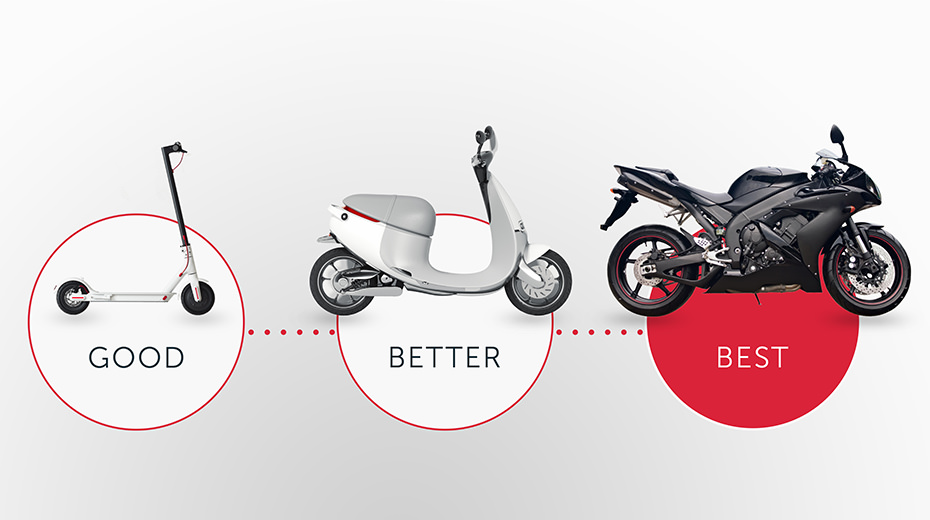Keys to Improving B2B Customer and Client Engagement

Share this story
Someone once said: Knowledge is power!
How well do you know your B2B customer?
Knowledge
As a B2B marketer your gut reaction might be to say, “Very well! We have a firm ideal customer profile (ICP) and our buyer personas are extremely detailed for current clients / prospective customers. Also, our statement of work (SOW) is in place and we are delivering great work for existing clients.”
OK, sure, but have you revisited those elements since 2019? And by revisited, we mean really dug into and turned upside down until you were staring at a prospective customer who appears brand-new? What about your existing clients? Chances are, who you thought was your client last week may not even be the same person this week. This change can be a physical one or more likely an emotional one.
If this global pandemic has taught us anything, it’s that the world is ever changing. COVID-19 has accelerated digital transformation, and maintaining an end-to-end digital experience is now an essential building block of customer relationship management. With the mass employee exodus happening nationwide, across all industries, companies are experiencing turnover in record numbers, making room for new, junior and seasoned employees to emerge as potential customer leads or client contacts. These new leaders are digitally savvy and know what they want. So how do we, as B2B marketers, incorporate this knowledge and navigate this new, altered space? We must start from the beginning of the cycle — converting a prospective customer into a client by focusing on the customer’s objectives, staying engaged once they become clients, and aligning on offerings and strategies that will be beneficial to their businesses.
Focus
The pandemic has flipped everything!
Objectives, goals, visions and more are heavily influenced by the events taking place in the world around us. B2B marketers should be as nimble as this new normal and change the view of their customers to something that is a little more fluid — taking a page from the B2C industry. According to MarketingProfs, consumers perceive themselves as dynamic, evolving, multi-layered individuals that are not confined to a single definition.
This doesn’t mean death to personas and client nurture journeys. Instead, it is an opportunity to focus more holistically. A holistic view of your customer can lead to new paths and future partnerships. In addition, we as B2B marketers will need to be more agile and flow with our current clients as they focus on new ideas, platforms and methods to increase brand awareness. Build a flexible marketing strategy that reflects your commitment to your prospective customers’ and current clients’ evolving identities.
We reflect different sides of ourselves depending on our environment. That doesn’t mean people are being inauthentic; they are simply more in tune with different layers or facets of themselves.
Engagement
So, your knowledge of your B2B customer and focus on their needs has led to a client relationship. When was the last time you checked to make sure your client contact remains the decision-maker? Are they still in place, or is there someone else who’s making the decisions and choices? Check in! Client engagement should be part of your regular routine.
You should take the time to get to know your clients — strengths, weakness, competition, etc. More importantly, know the decision-makers and how decisions are made in the new normal. What was once a focus and critical growth area may no longer be on your client’s radar. If so, you could be chasing the wrong objectives. You are at risk of appearing out of touch with the business or, more specifically, the business environment your client is navigating.
It’s important to interact with your client to build and maintain trust. Trust is what fortifies long-standing and fruitful relationships. Harvard Business Review notes the stakes are high for client engagement, saying, “Trust will be built by and rewarded to those that listen to customer needs and then craft solutions to meet those needs.” Ensure your interactions are authentic and meaningful to your client. Remember, your goal is to make an impact on your client’s business. Maintaining connections and demonstrating you understand their business is a solid foundation for trust.

Alignment
Alignment is the other crucial element in the client relationship management process. You want to make sure that your offerings and strategies are enough for your client. You should have assurance that your B2B service delivery options are in alignment with their needs. But here’s the kicker: Do you offer any new services that would be of interest to your client? Are you sure? This gets back to my original question — how well do you know your client? Which of your offerings are most beneficial to them?
Start from the customer journey where you use knowledge and continue through the cycle of focus, engagement and alignment — building trust with your new client. Each time you do, you are solidifying a stronger relationship. Don’t be afraid to engage and learn. Build a fluid customer focus that stretches your marketing muscles, making you more flexible in your acquisition strategies. Finally, be transparent with your customers when they become clients so alignment on solutions and services can keep pace with this dynamic new normal. B2B marketers should always aim to be curious and agile so that we remain the consistent variable in the success of a client’s business.


